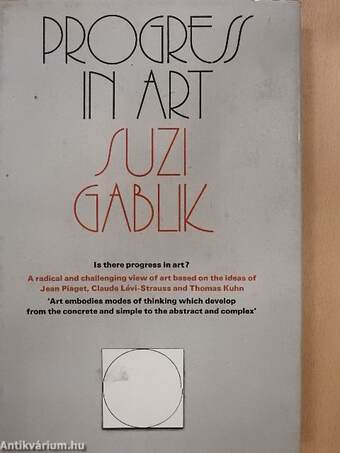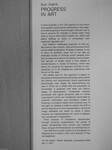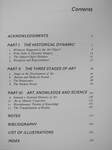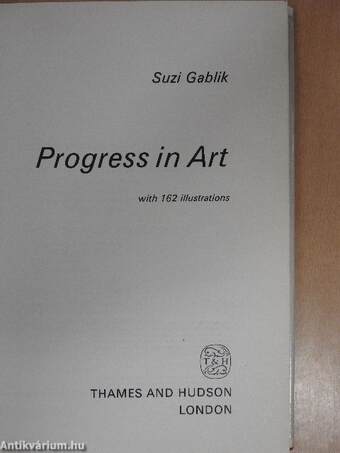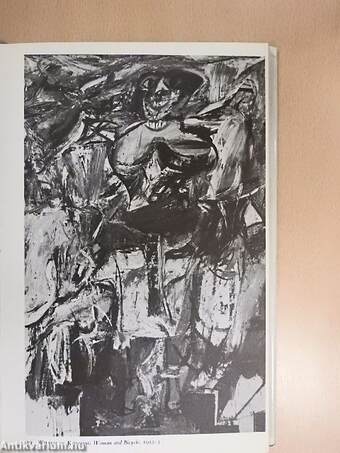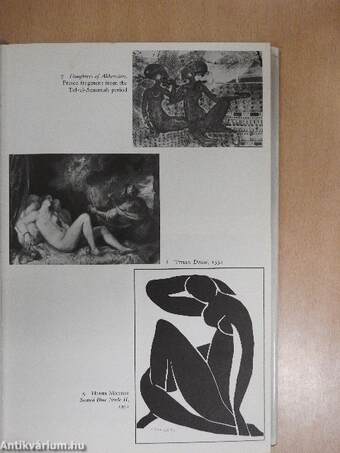1.067.339
kiadvánnyal nyújtjuk Magyarország legnagyobb antikvár könyv-kínálatát

VISSZA
A TETEJÉRE
JAVASLATOKÉszre-
vételek
Progress in art
| Kiadó: | Thames and Hudson |
|---|---|
| Kiadás helye: | London |
| Kiadás éve: | |
| Kötés típusa: | Vászon |
| Oldalszám: | 192 oldal |
| Sorozatcím: | |
| Kötetszám: | |
| Nyelv: | Angol |
| Méret: | 25 cm x 17 cm |
| ISBN: | 0-500-23220-2 |
| Megjegyzés: | Fekete-fehér fotókkal illusztrálva. |
naponta értesítjük a beérkező friss
kiadványokról
naponta értesítjük a beérkező friss
kiadványokról
Fülszöveg
Suzi Gabiik
PROGRESS IN ART
Is there progress in art? The question is one which most people would answer vehemently in the negative without giving it much thought. And yet, how is one to account for changes in artistic style? And what is one to think about modern art, which still seems baffling to many in comparison with traditional figurative art?
Suzi Gablik's challenging argument is that art, like science, has a history, order and structure which can be called progressive. Progress, however, is not in terms of aesthetic value, but in the way art embodies modes of thinking which develop from the concrete and simple to the abstract and complex. The 'growth' of artistic styles is thus related to transformations in modes of thinking, which also allows for situating the apparent anomaly of contemporary art in an enlightening relationship with the art of the past.
The model used for the argument is based on principles of developmental psychology advanced by the famous and... Tovább
Fülszöveg
Suzi Gabiik
PROGRESS IN ART
Is there progress in art? The question is one which most people would answer vehemently in the negative without giving it much thought. And yet, how is one to account for changes in artistic style? And what is one to think about modern art, which still seems baffling to many in comparison with traditional figurative art?
Suzi Gablik's challenging argument is that art, like science, has a history, order and structure which can be called progressive. Progress, however, is not in terms of aesthetic value, but in the way art embodies modes of thinking which develop from the concrete and simple to the abstract and complex. The 'growth' of artistic styles is thus related to transformations in modes of thinking, which also allows for situating the apparent anomaly of contemporary art in an enlightening relationship with the art of the past.
The model used for the argument is based on principles of developmental psychology advanced by the famous and revolutionary Swiss experimental psychologist Jean Piaget. By demonstrating the way in which art is linked with the acquisition of knowledge, it proposes that there are distinct stages of development: increasingly complex perceptual and logical structures lead to mental organizations which are increasingly dominated by scientific, rationalistic and conceptual modes of thinking in contrast to earlier more mystical ones. In this light, an attempt is made to explain the shift in art from figurative or iconic representation, where the image resembles the object to which it refers, towards non-representational art which is abstract and conceptual in organization.
Three sections of illustrations demonstrate, through revealing juxtapositions, the course of artistic development from ancient and medieval times, through the Renaissance, to contemporary art.
Suzi Gablik is an artist, author of a monograph on Magritte and co-author (with John Russell) of Pop Art Redefined.
On the jacket: Robert Mangold, Incomplete Circle No. 2. 1971. Vissza
Témakörök
- Idegennyelv > Idegennyelvű könyvek > Angol > Művészetek > Művészettörténet, általános
- Idegennyelv > Idegennyelvű könyvek > Angol > Művelődéstörténet
- Művelődéstörténet > Eszmetörténet > Művészetek
- Művészetek > Művészettörténet általános > Esztétika
- Művészetek > Művészettörténet általános > Idegen nyelv > Angol
- Művészetek > Művészettörténet általános > Elmélete
Suzi Gablik
Suzi Gablik műveinek az Antikvarium.hu-n kapható vagy előjegyezhető listáját itt tekintheti meg: Suzi Gablik könyvek, művekMegvásárolható példányok
Nincs megvásárolható példány
A könyv összes megrendelhető példánya elfogyott. Ha kívánja, előjegyezheti a könyvet, és amint a könyv egy újabb példánya elérhető lesz, értesítjük.



